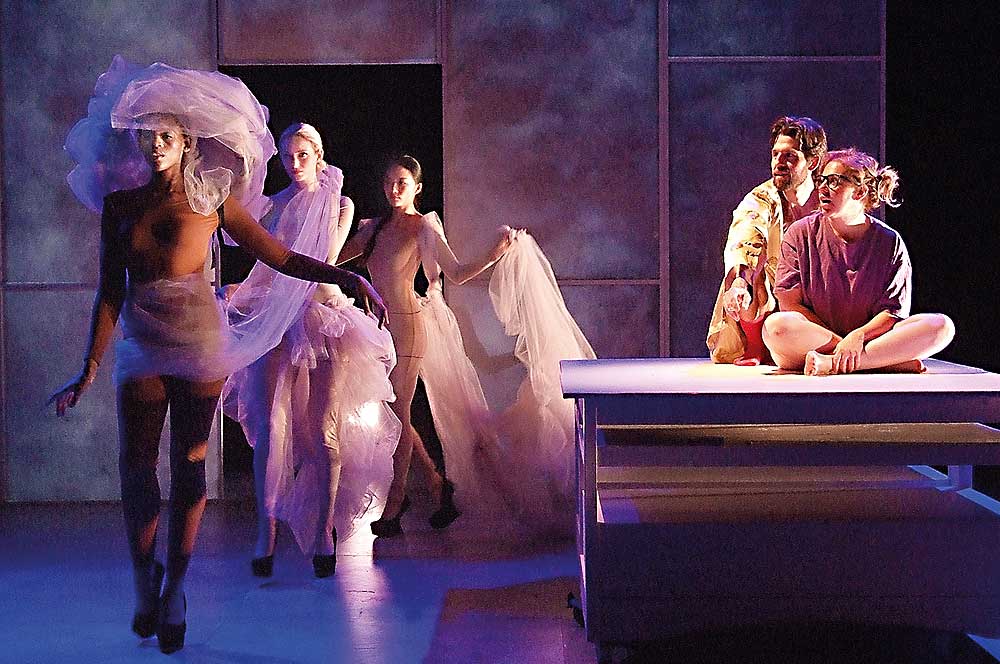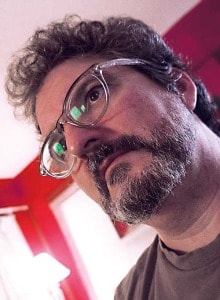 John Zalewski is a very quiet man. Gentle, soft-spoken. When he walks the floor of his own bungalow in Long Beach, Calif., or that of a bar or a diner, his feet seem barely to touch the ground. It’s as though making a sound would offend the spirits, even amid the blare of televisions spewing commentary on the baseball game of the moment, or the Fox News report on missiles crashing wherever in the world missiles are crashing.
John Zalewski is a very quiet man. Gentle, soft-spoken. When he walks the floor of his own bungalow in Long Beach, Calif., or that of a bar or a diner, his feet seem barely to touch the ground. It’s as though making a sound would offend the spirits, even amid the blare of televisions spewing commentary on the baseball game of the moment, or the Fox News report on missiles crashing wherever in the world missiles are crashing.
Even his downing of mojitos or margaritas makes no difference to the decibel level or the quiet clarity of his speech.
At 47, Zalewski makes his living as a sound designer, mostly in the theatre but occasionally in other areas, such as the video game industry. His comprehension of sound and noise, and how they work in tandem, is profound. Zalewski turns theatre productions into sound poems. He helps them breathe, sometimes with techniques so subtle we can hardly hear those breaths. Sometimes he composes a barely discernible rumble to underscore a monologue, or a soft squeal at a pitch scantly within range of the human ear. And yet, despite all this almost invisible subtlety of craft (not to mention the softness of his speech), Zalewski is among the most heralded designers in Southern California.
Since he started sound designing in 1995, Zalewski has been regularly honored—as a 2001–02 grantee in the Career Development Program of Theatre Communications Group/National Endowment for the Arts; on the nominee roster of Los Angeles Drama Critics Circle Awards, Ovation Awards, LA Weekly Theater Awards and (until it stopped reviewing theatre in 2013) Backstage’s Garland Awards; and, in 2014, as winner of the LA Weekly’s Career Achievement Award.
Perhaps one reason Zalewski is such a strikingly fine sound designer is his holistic approach to the theatre—an approach that incorporates his background in visual art. “I look at sound design in terms of lighting design, texture and shadow constantly shifting with the piece,” Zalewski explains.
In fact, though Zalewski initially studied audio engineering with John Hill at California State University–Dominguez Hills (located in the suburban city of Carson, between the downtowns of L.A. and Long Beach), he soon switched his focus to studio art and eventually transferred to Cal State–Long Beach, as an art major. To this day, he fondly recalls his mentor Hill “talking about the sound stage within the left-right pair of speakers—what’s in the center, what’s in the front. That really spoke to me. He was talking about sound in a visual manner.”
Director Bart DeLorenzo remembers Zalewski’s approach to the design for an Evidence Room production of Naomi Wallace’s play One Flea Spare, which DeLorenzo directed in 1998 at the Ivy Substation in Culver City. For the effect of horses bounding across the landscape, Zalewski’s plan for the one effect necessitated that the theatre purchase a quadraphonic sound system.
“We had no money,” DeLorenzo laments, “and it was a lot of money that his design required. Couldn’t he just play some horse hoofs on a single speaker? I was very hesitant. So he set up a test for me. He put up speakers around the space, and then he synchronized them. And you could hear these horses running around you. It was the most exciting and compelling moment. I had to say, ‘Yes, spend the money!’ I think he won all the awards for that show. That’s John at his finest. He’s always making you buy more speakers.”
Well, not always. For DeLorenzo’s 2001 staging of Schiller’s Don Carlos, at Evidence Room’s downtown-adjacent space, Zalewski told the director he could do the design if he purchased just one item: a new trash can.
“He brought it home and did every kind of thing you could do with a trash can,” recalls DeLorenzo. “Screws got scratched across it. The entire score was made with a trash can.”
Cal State, Dominguez Hills, is also where Zalewski also learned how to cue sound.
“Our ears are really sensitive to the mid-range, where actors’ voices land,” Zalewski says. “So where the actors are speaking the text, you want to leave that alone—use low frequencies and high frequencies, and leave the mid-range alone. Don’t compete with the actors and their speech.”
Zalewski has little interest in reading a script before designing its soundscape; he’d rather hear it.
“I’d just as well skip that and go to the first table-read, listen to the actors read it, and feel their energy, and take my cues from the actors’ mouths,” Zalewski says. “I need to see to understand the rhythms, the timing, where there’s agitation, where it’s placid. I may play against what the actors are doing. What I see and what I feel come from the set and lights and what the actors are doing. All of this plays into what I do sonically.”
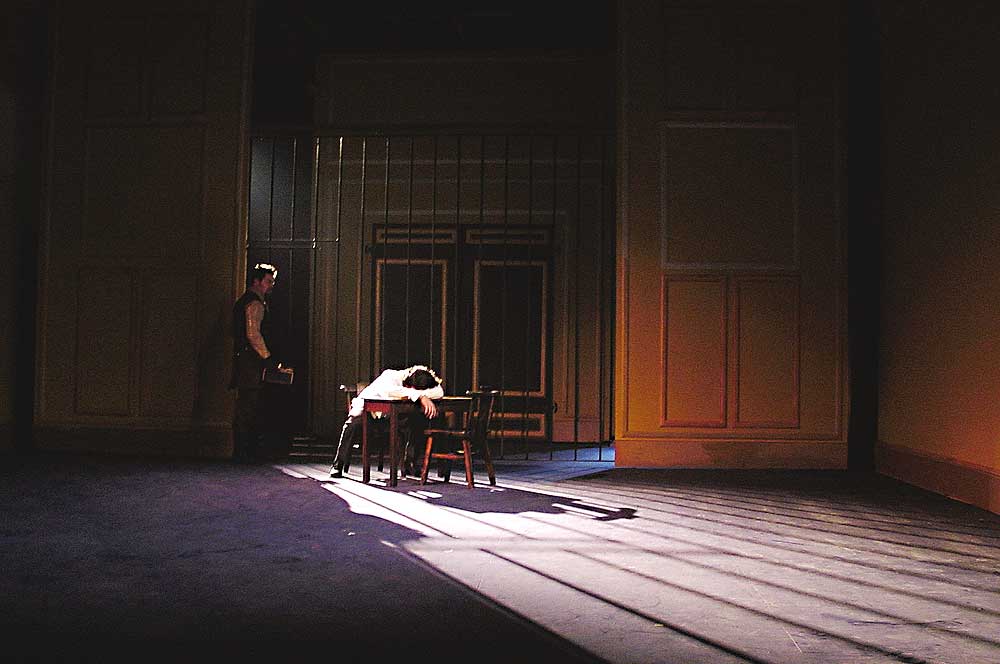
Zalewski’s global aesthetic could also be a consequence of his having spent much of his youth in Brazil. (Zalewski is fluent in Brazilian Portugese.) But let’s start at the beginning.
He was born in Alhambra, Calif., a city eight miles east of downtown Los Angeles. He remembers almost nothing of Alhambra, since his parents moved so frequently. Before the age of 10, he’d also lived in Seattle, San Jose (where his only sibling, Daniel, was born), as well as San Ardo and Paso Robles in central California. Among his childhood memories is spitting on scalding pipes, just to watch the saliva sizzle.
Zalewski grew up in a Catholic family. His mother, Silvia, is Brazilian. His father, Henry (who died in 2009), was a Belgian of Polish descent, and a gas station designer for Mobile Oil who later worked in oil field production. In 1978, after Henry moved to Libya to work in an oil field there, Silvia took John and Daniel to northern Brazil to live near Silvia’s father, her mother and her brother. Together, in the city of Belem, the family opened a hearts-of-palm cannery, where Henry would visit them by shuttling between Libya and Brazil.
While living in Brazil, John became entranced with the music of Peter Gabriel and Pink Floyd. “I was a big fan of orchestral music, panoramic sound vistas,” he says. At the age of 18, Zalewski returned to the United States to study audio engineering and music synthesis at Cal State, where he learned composition and befriended Raul Vincent Enriquez and Eric Blank. The trio later became roommates.
Not only did Enriquez have his own band, Zalewski recalls, he also “knew the art scene in L.A. and he was the sound man at LACE [Los Angeles Contemporary Exhibitions].” At some point, a performance by Enriquez’s band was seen by a burgeoning stage director, an Irani emigré named Reza Abdoh, who hired Enriquez and Blank to be his sound designers for several projects. And this is how Zalewski, in 1990, was introduced to the formidable work of Abdoh, in a production called The Hip Hop Waltz of Eurydice at Los Angeles Theatre Center.
“Theatre never excited me until I saw Reza Abdoh’s work,” Zalewski concedes. The late director’s multilayered productions “made me see all of theatre’s possibilities—of creating four-dimensional collages.”
Among the reasons Zalewski was so smitten with Abdoh’s intensely visceral, visual stagings was the designer’s shifting interest from sound to visual art. At Cal State, Long Beach, Zalewski studied drawing and painting. In 1993, Zalewski ran the video and film playback on Abdoh’s staging of Quotations From a Ruined City, performed at the Los Angeles Festival.
Through all of this, Zalewski was being financially supported by his parents. He remembers his father pressuring him: “‘John, there’s no future in this.’ My mother, not—she was an enabler.”
Playwright-director Laural Meade, another Abdoh convert and collaborator, was among Zalewski’s earliest employers. Zalewski designed sound for her play Leopold and Loeb, A Goddamn Laff Riot, developed at the Audrey-Skirball Kenis Festival at UCLA, and at Los Angeles Theatre Center, also in 1993, before its premiere at Seattle’s On the Boards.
DeLorenzo saw that production and started talking to Zalewski about designing the sound for productions at his own theatre, Evidence Room, which he had just established in Culver City.
“I responded to Leopold and Loeb, but I especially responded to the sound,” DeLorenzo explains. “It was a sound like I’d never heard before. A lot of underscoring and strange new music of all kinds. I wanted to meet this sound designer, and when I did, he told me he was getting his degree in painting—that he didn’t want to get too involved in things like this, but it was nice meeting me.
“I kept calling him and invited him to my theatre. It took a while, actually—I had to really seduce him into doing this.” The first Evidence Room show Zalewski did was Racine’s Adromache in 1997. “I wanted this militarization to start the piece,” DeLorenzo recalls. “It began with this helicopter’s descent onto the stage. He made us buy a couple of speakers; we placed them underneath the risers, so the whole thing just shook as the helicopter descended. I was rehearsing in this crummy warehouse space next door. Through the walls I heard it, and I said, ‘What the fuck is this? What is going on?’ I went next door. He said, ‘It’s good but I don’t know that it’s loud enough.’”
“One of the reasons I appeal to Bart so much was because I was so bold,” says Zalewski. “There’s this thing in sound design that it has to be transparent, it can’t be heard—that’s been much of the talk since they removed sound design from the Tonys. And that’s true to a point. But Reza used sound boldly, and Bart, in his design tastes, has a taste for bold sound design.
“So it’s really slap and tickle: You do want to be invisible and sneak up on people, but you also want to be able to rise up from that subtlety and get people to wake up, even assault them a little bit—it depends on what you’re doing.”
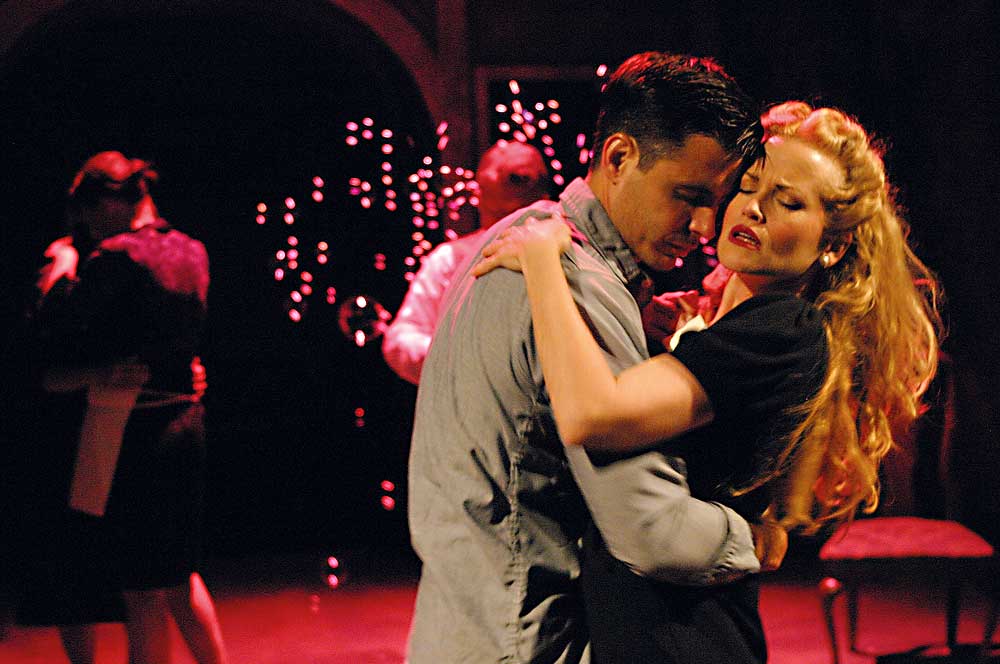
Someone else liked what he heard at the Evidence Room: Actors’ Gang managing director Mark Seldis, who was a producer on Andromache. DeLorenzo says that Seldis “stole” Zalewski for shows at the Actors’ Gang from then on: Oscar Wilde’s Salome, directed by David Schweizer (1998); Nikolai Gogol’s The Inspector General, adapted and directed by Michael Schlitt (1998); Jeffrey Dorchen’s Ugly’s First World, directed by Bill Cusack (1999).
“With a lot of designers, it’s ‘tell me what you want,’” DeLorenzo says, “and you start there, and they start emphasizing. But John always has a response of his own. It’s odd. He’s an unusual thinker.”
Abdoh’s actors Tom Fitzpatrick and Ken Roht introduced Zalewski to stage director Jon Lawrence Rivera, whose theatre, Playwrights Arena, still specializes in new works by local playwrights. It was at Playwrights Arena, also in 1997, that Zalewski won his first sound design award for a play called Atomic Quintet (full disclosure: I was the playwright).
“These were the days when we were using cassettes for sound,” Rivera recalls. “Even then, his soundscapes were truly inspired and magical. He hears sound where I don’t. And he’ll bring it in during tech and you can sense the scene or a moment elevate because of it. As technology advanced, so did the sophistication of his design. His recent design works are mind-boggling. When I hear his sound design, I feel the play better.”
Director Jessica Kubzansky, now co-artistic director of Pasadena’s Theatre @ Boston Court, has long employed Zalewski to design sound on many of her productions, from Southern California to Portland’s Center Stage; she’s lost count of how many. (“Somewhere around two dozen—I’d have to look it up,” she says.)
“There are many sound designers in the world who can provide doorbells, train sounds, phone rings and a couple of music cues as transitions in any given production,” Kubzansky explains. “There are none who create a sonic landscape like John does, who make an aural world that is artfully abstracted in such a way that it lifts the play into a brilliant theatrical universe.”
But working with Zalewski isn’t all moonbeams and rose petals, DeLorenzo adds. There’s a tinge of caution even in Kubzansky’s praise that, though Zalewski is a gentle man, “He’s also very passionate.”
DeLorenzo still remembers a late night in 1999 when he and Zalewski were working on James Hadley Chase’s No Orchids for Miss Blandish at Culver City’s Ivy Substation. DeLorenzo says he needed a replica of a Frederic Remington painting, “Charge of the Rough Riders,” glorifying Teddy Roosevelt, to hang in the set’s saloon. Zalewski volunteered to paint it.
DeLorenzo says he asked Zalewski if he was a scenic painter. According to DeLorenzo, Zalewski shot back with, “What are you talking about?” He’d gotten a degree in painting, after all. (Not strictly true: Zalewski had dropped out of Cal State–Long Beach just shy of earning a BFA in art.)
After the final rehearsal before the show was slated to open, DeLorenzo was decorating props while Zalewski was “way behind” painting the Remington replica. Zalewski, DeLorenzo explains, had first drawn a grid on which to replicate the painting in sections. At 3 a.m., DeLorenzo heard Zalewski announce that he was done.
“Wow, great!” DeLorenzo said. “That was fast.”
When he walked around to look at the painting, DeLorenzo was dismayed to see that Zalewski’s finished replica still contained the painted-on grid.
“I said, ‘The grid has to come off.’ ‘I think the grid gives the painting structure,’ he argued. ‘But it’s supposed to be a painting in a saloon, not a postmodern painting! This saloon isn’t filled with CalArts undergrads!’ ‘I don’t know if I can do this,’ John said. ‘John, you volunteered for this.’ ‘It’s 3 a.m.!’ ‘I know, so there’s not much time, is there.’
There was much yelling, DeLorenzo recalls, during which Zalewski finally, reluctantly, agreed to resume the replica by removing the painted grid. DeLorenzo gave the artist space and time to get the work done, and the results were obviously memorable: The painting remains hanging to this day in the Evidence Room’s former Beverly Boulevard space, now under different leadership and christened Bootleg.
Reflecting on that years-ago incident, Zalewski smiles but still insists, “That tavern could easily have had patrons who appreciated postmodern art.”
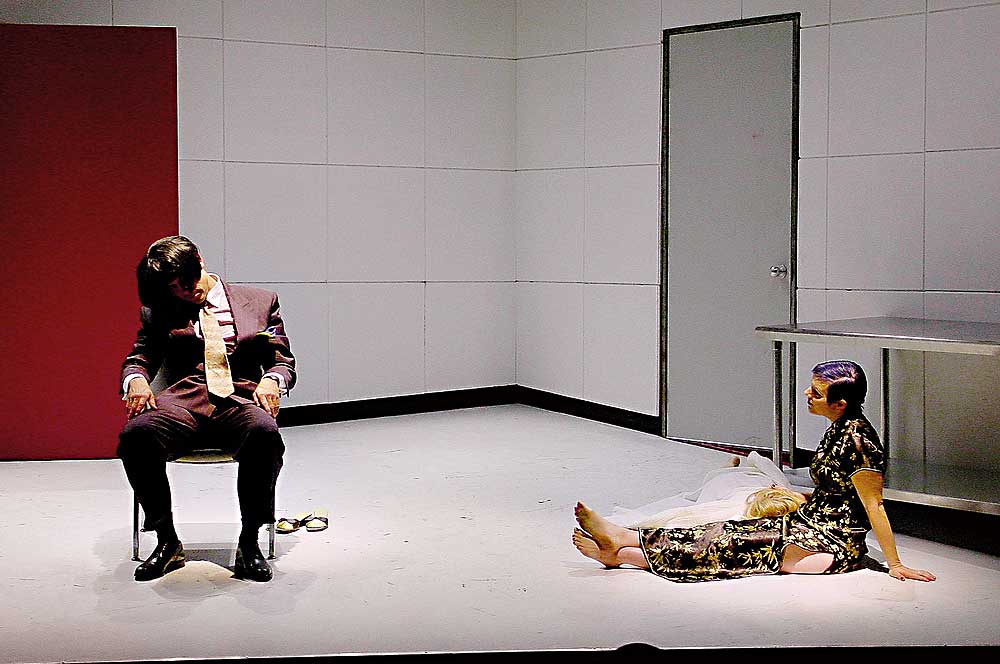
Zalewski recently assumed the deed of his family’s Long Beach bungalow. It’s a cluttered compendium of sound equipment, a computer, props and paintings and mementos and scripts and awards from shows gone by. The mortgage is paid—a huge perk in Southern California’s now rabidly expensive real-estate market. The situation allows him to live comfortably on the modest income that designing sound for theatre productions generates. Zalewski says that in a good year, he makes around $30,000. As for personal relationships, he says his passion is largely reserved for his work. The theatre community in the L.A. area has become his family.
Zalewski is looking ahead to three projects that promise to take him beyond the L.A. environs. The first is The Day Shall Declare It (influenced by the success of Punchdrunk’s Sleep No More in New York), a series of modules directed by Annie Saunders, who runs a company called Wilderness, and dancer-choreographer Sophie Bortolussi, of NU Dance Theater, that combine to form an immersive piece based on the works of Tennessee Williams and Studs Terkel. The piece was developed in L.A. two years ago—in a garage in Silver Lake, in fact—before being produced by London’s Theatre Delicatessen and Bush Theatre. A second iteration was performed in L.A. in January 2014, and the plan is to take the piece to New York.
Next comes Keith Huff’s A Steady Rain, for which Zalewski designed sound at West L.A.’s Odyssey Theatre last March, slated to open at the Guthrie Theater in Minneapolis on Oct. 17. And Sheila Callaghan’s Everything You Touch, co-produced by Theatre @ Boston Court and New York’s Rattlestick Playwrights Theater, is being prepared for a New York production next February.
DeLorenzo has another memory, from when he directed Len Jenkin’s Margo Veil at the Odyssey in 2011, that sums up Zalewksi’s unique approach.
“The playwright says the sound effects should all come from the actors. Very simple. That’s how they’d always done it. I had done Donald Margulies’s Shipwrecked! with actors making the sound effects, but I wanted to bring in John as sound designer for Margo Veil, figuring that he can teach us how to do the live sound effects.
“He watched a run-through, and he said, ‘I think you want some other effects.’ ‘No, no, no.’ He says, ‘Can I at least try?’ ”
Zalewski proceeded to introduce something he almost never employs—music. Or, to be more specific, one simple melody.
“It was so exciting—so unexpected. It transformed the piece from a ‘story’ into somebody’s dream or nightmare. It sped it up, he slowed it down. It added a David Lynchian atmosphere. If I’d had a sound designer who followed my orders better, the show wouldn’t have been as good. You have to give credit to his great, contrarian ethos.”
Steven Leigh Morris is the theatre critic for LA Weekly, and the founding editor of StageRaw.com. He is also a playwright.

